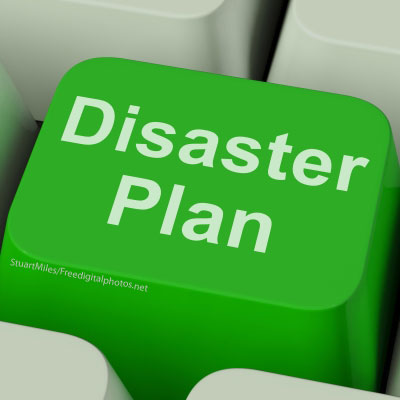Nobody wants to think about disasters, but the fact remains that a natural or man-made disaster can strike at any time and you need to be prepared. Planning and practice before you're in danger can help your family survive in an emergency situation. Read on for tips about how to create a family emergency kit and disaster plan for your new or current home.

Natural disasters
Even with weather-related technology and warning systems, tornadoes, hurricanes, earthquakes and other natural disasters can catch you and your family off guard and leave you in dangerous conditions. If you live in an area prone to a specific natural disaster, make sure your family is prepared for the worst possible scenario. If you live in Tornado Alley, you may not see many hurricanes, but you'd better be prepared for a tornado.
The Red Cross and National Weather Service both offer information about specific areas in the United States and what items you'll need to be prepared for region-specific natural disasters. They will also be able to offer information on what to do in case of natural disasters including evacuation maps, emergency plan tips and recommended supplies.
Creating an emergency kit
When creating an emergency kit for disasters it's important to remember that at the end of the day, YOU are responsible for making sure your family is prepared.
While recommended supplies may differ from region to region, having a kit with basic items is a good start to ensuring your family is prepared when disaster strikes. Keep in mind that in the event of a disaster, natural or man-made, you may need to evacuate at a moment's notice. Make sure to prepare your emergency kit ahead of time so that you have time to search for and buy supplies if you need them.
When assembling your kit, make sure you have enough food, water and supplies for at least 72 hours. Emergency services personnel may arrive in town shortly after a disaster, but they may not reach you directly for a day or two. Keep in mind that after a disaster, basic services like electricity, water, gas, sewage treatment and telephones may be cut off for days, so gather things to help you manage during those outages.
Once you've got your emergency kit ready and packed, keep it somewhere easily accessible in the event of an emergency or evacuation--near your front door, in the trunk of your car or in your garage.
Basic supplies:
- Water - one (1) gallon per person, per day for drinking and sanitation
- Food - at least three (3) days' worth of non-perishable food
- Battery-powered radio and a NOAA Weather Radio with tone alert and extra batteries for both
- Flashlight with extra batteries
- First-Aid kit
- Whistle to signal for help
- Moist towelettes and garbage bags for personal sanitation
- Dust masks to filter air
- Wrench or pliers to shut off utilities
- Can opener for food (if kit contains canned food)
Create an emergency plan
Having an emergency kit is all well and good, but you also need to create and be able to implement an emergency plan. Where will you meet if you're separated? Where will you go if you're evacuated? Where will you go if your home is destroyed? These are the things you need to consider when creating an emergency plan for disasters.
Communication is key when creating an emergency plan. You need to make sure that everyone in your family, including your children, understands where to go and what their role is during an emergency.
Because you may not always be home when a disaster strikes, you should make sure you're aware of any emergency plans that your workplace or school may have.
To create an emergency plan focus on these points:
- A meeting place near your home for sudden emergencies like a fire.
- A meeting place outside of your neighborhood for emergencies where you are evacuated and cannot return home.
- Contact information for family members and one out-of-area contact person. Remember it may be easier to text or call long-distance when local landlines are overloaded.
- Directions/map information to meeting place.
- Knowing the exits of your house, school and workplace.
Once you've got a plan, practice it often so it will become second nature to you in an emergency. Remember, disaster can strike at any time and you'll need to be prepared at a moment's notice.